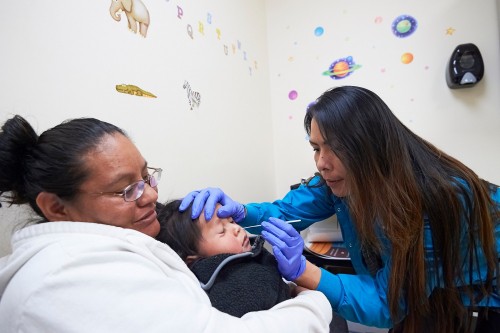About
Historically, American Indian and Alaska Native (AI/AN) children aged <5 years have suffered from invasive H. influenzae type b (Hib) disease at rates at least 5 times higher than the general U.S. population. Following introduction of a primary series and booster dose with conjugate Hib vaccine in the late 1980s, rates of Hib disease decreased substantially among both AI/AN and non-Native children. However, rates of Hib disease among AI/AN children remain higher than among non-AI/AN children, despite Hib vaccine coverage similar to or greater than the national average and proven efficacy of Hib vaccine in this population. In addition, indigenous children in the US and other parts of the world also experience higher rates of disease caused by encapsulated H. influenzae other than type b, most notably type a.
Secondary cases of Hib disease most often occur in young, unimmunized close contacts, usually in the first week after the index patient is hospitalized. Secondary cases can be prevented by administering rifampin chemoprophylaxis, which reduces the risk of transmission and disease by eliminating H. influenzae from the back of the throat. Given the severity of invasive Hia disease, the high incidence among some communities, including Navajo Nation and other indigenous communities, and the concern that secondary cases could occur, the American Academy of Pediatrics now recommends that clinicians consider chemoprophylaxis for close contacts of a person with invasive Hia.
Prophylaxis should be initiated as soon as possible; however, secondary cases can occur later, and therefore initiation of prophylaxis less than 7 days after hospitalization of the index patient may still be of benefit. The JHCIH is conducting the H. influenzae Rapid Response Investigation (HiRRI) case-control study, to: Determine the rates and pattern of spread of pharyngeal colonization with H. influenzae among close contacts of index cases as compared to community controls Determine risk factors for encapsulated H. influenzae carriage Characterize strains of H. influenzae using microbiologic and molecular methods Determine risk factors for invasive H. influenzae disease Determine the impact of chemoprophylaxis on colonization
The study is approved by the IRBs of the Johns Hopkins Bloomberg School of Public Health and the Navajo Nation and has the support of the Navajo Epidemiology Center. The overarching goal of this study is to identify possible strategies that can reduce the burden of invasive H. influenzae disease in American Indian children.

